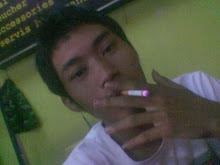

 Many tattoo designers and customers getting a new tattoo think long and hard about the make-up of the artwork to be placed on the recipient, but sometimes both can forget about the overall composition of the tattoo within the scheme of the customer's body and other existing or future artwork. This article will not attempt to discuss the nature of shapes and forms artwork may take, but rather how that artwork lies with other artwork and with the body of the customer itself.
Many tattoo designers and customers getting a new tattoo think long and hard about the make-up of the artwork to be placed on the recipient, but sometimes both can forget about the overall composition of the tattoo within the scheme of the customer's body and other existing or future artwork. This article will not attempt to discuss the nature of shapes and forms artwork may take, but rather how that artwork lies with other artwork and with the body of the customer itself.The human body is a continuous collection of shapes and forms. This spectrum of shapes can be seen differently by each of us. Tattoos help define those shapes and forms and allow for these areas to accented, merged, separated, and redefined when placed properly.
Looking at the human arm, probably the most common area for tattoos (at least in more recent times within Eurocentric societies), you could see elongated ovals, with lots of curves, a visible flatter area to the outside, a visible rounded area to the front, a flatter less seen area to the inside and a less curved, but still rounded area semi-seen to the back. Within that one may see smaller ovals or triangles within the overall series of curves. Reducing the area in which one looks often takes the viewer to flatter and more restricted areas. Mapping out tattoos over these ovals, triangles, flat spots, and various levels of immediate visibility says something about how the artist and customer see the human body and the artwork itself.
Personally, I have a tattoo on my upper right arm and I (with the help of my artist) placed it such that its main long oval form sits upright over the outside flatter portion of my muscles in the middle of my outer arm. Extensions from the design then curve over the portions of my arms curves, stretching out towards the next flatter areas. Longer portions even extend into what I would consider to be the next section of my body, namely my back and chest. It is placed such that the main part of the image is visible and smaller (but still important) details are visible upon greater inspection (of course more readily without a shirt on.)
It is placed there not only because of the design itself, but because of future work I expect to have done. There will be some back ground work and other artwork that will effectively "bump up" against the existing artwork at various adjacent locations. That artwork will accent the curves that lead up to the larger piece, showing how I (and my artist) see the forms and shapes of my body merging together to make a more continuous canvas.
And it is this canvas that must be brought to the artist and customer's attention in order to give them the information, even ammunition in a way, to allow them to make the most meaningful decisions on what designs to get and where they will be placed. Artwork design can be made to fit these spaces in various ways, through rotations, altering and personalizing designs, and even colour and shading choices. It may not be desirable to alter predetermined artwork, so other methods can be used, such as reduction or enlargement of size and use of borders or outlines to make the design work well with the customer's forms and curves.
Taking into account the body's outlines and geometrical associations and how these shapes all work together can enhance any layout of tattoos. Customers should work with their artist and get multiple ideas of placements for artwork and decide what works best for the expression of their body they wish to make. Look at yourself in the mirror and see what shapes and areas you see. Think about what future artwork you may want to get and see how what you have dictates and enhances what space you may want to fill. This simple step in visualizing your body will make your tattoos more meaningful and beautiful, offering longer lasting enjoyment of and satisfaction with your next tattoo.





No comments:
Post a Comment